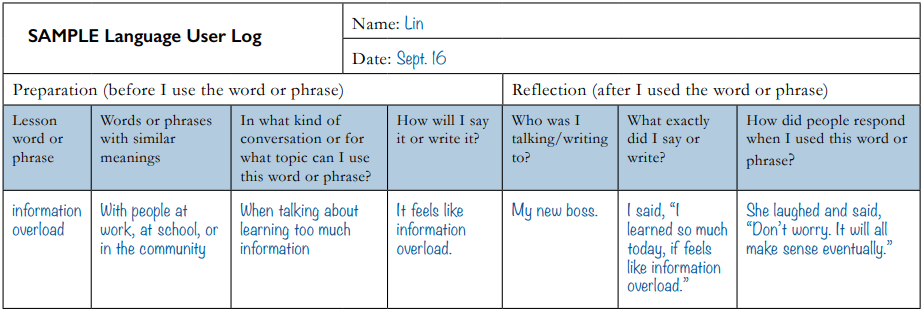Appendix 3: Strategy Coach Tips
49 Chapter 4: Strategy Coach Tips
4.1 Strategy Coach Tip
Reading in detail and checking your understanding 
Reading in detail
When you want to thoroughly understand all of the information in a text that you are reading, you should read for detail.
When you read for detail, start by looking at the layout of the text. Then read the title, headings, and any additional information that stands out to get a sense of what the text is about.
Next, read through the complete text once to get a sense of all the information included. Then read through the text again, making notes or highlighting important details to keep track of key information. This also helps you stay focused on the information that you are reading.
Reading for detail takes longer than skimming or scanning texts, but it helps you to understand all of the information in a
text, making sure you don’t miss anything.
Checking for understanding
When you are reading in detail, you should regularly ask yourself, “Do I understand?” Ask yourself this question at the end of long sentences or paragraphs of text.
Take the time to identify and highlight any words or phrases that you don’t understand. As you keep reading, you may read more information that will help you understand them. If there are words or phrases that you still don’t understand after you re-read the text, use your notes to ask questions or to focus your research.
4.2 Strategy Coach Tip
Reading the questions before listening 
Reading the questions before you listen helps you to predict what the listening will be about. It also helps you identify what information to listen for and when to listen for the information.
For example, let us look at the following question:
CDN Malls have closed mall entrances on the west side. True or false?
We can identify and underline the important words in the question and pay attention to the information around these keywords. In this question, you might mark up the question something like this:
?
CDN Malls have closed mall entrances on the west side. True or false?
When you hear the phrases mall entrances and west side, you know you need to pay attention and focus your listening on whether or not they are closed.
4.3 Strategy Coach Tip
Reviewing your email 
It is very important to proofread, or review, your workplace email messages for spelling, grammar, punctuation, and capitalization before you hit the Send button. This is especially important when you are corresponding with customers and clients. If you are not confident about checking for accuracy, you may want to ask a co-worker to proofread the email for you.
Here are a few quick punctuation notes:
- Always start your sentences with a capital letter and end with a period.
- Names must start with a capital letter.
- The salutation, or greeting, can end with a comma or a colon in a formal email; for example, both the following are correct:
- Dear Ms. Li,
- Dear Ms. Li:
- Titles end with a period; for example,
- Mr. Wallace
- Mrs. Najam
- Ms. Li
- The closing must be followed by a comma; for example,
- Sincerely
4.4 Strategy Coach Tip
Listening for thought groups 
When people speak in sentences in English, they chunk, or group words together, in thought groups. If you listen carefully for pauses in speech, you can identify how the words are grouped together.
4.5 Strategy Coach Tip
Learning new vocabulary 
Learning a language doesn’t only happen in a classroom. One of the best ways to learn how to use new words and expressions is to log, or record, how people use these words in daily life. Try to use the new words yourself, and keep track of how you use them. The more you use the new words, the easier they will be for you to remember and understand.
There are two kinds of language logs to help you develop your vocabulary:
1. Language Observer Log: In this log, you can record where you heard or read the word or phrase. Read this sample Language Observer Log and discuss it with your instructor or classmate.

2. Language User Log: In this log, you can record how and where you used the word or phrase. You can also analyze how you used it. Read this sample Language User Log and discuss it with your instructor or classmate.



